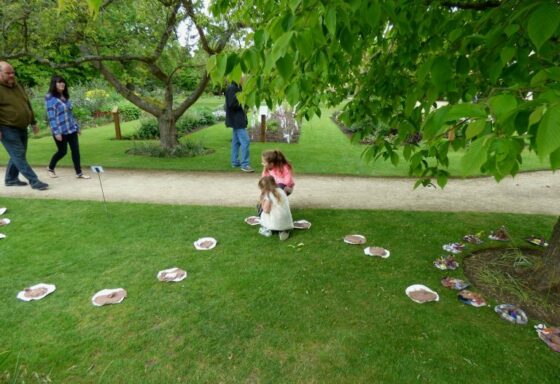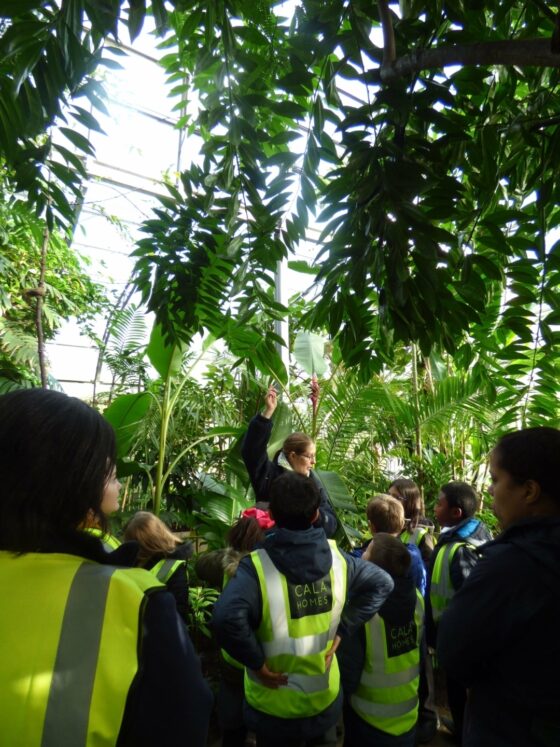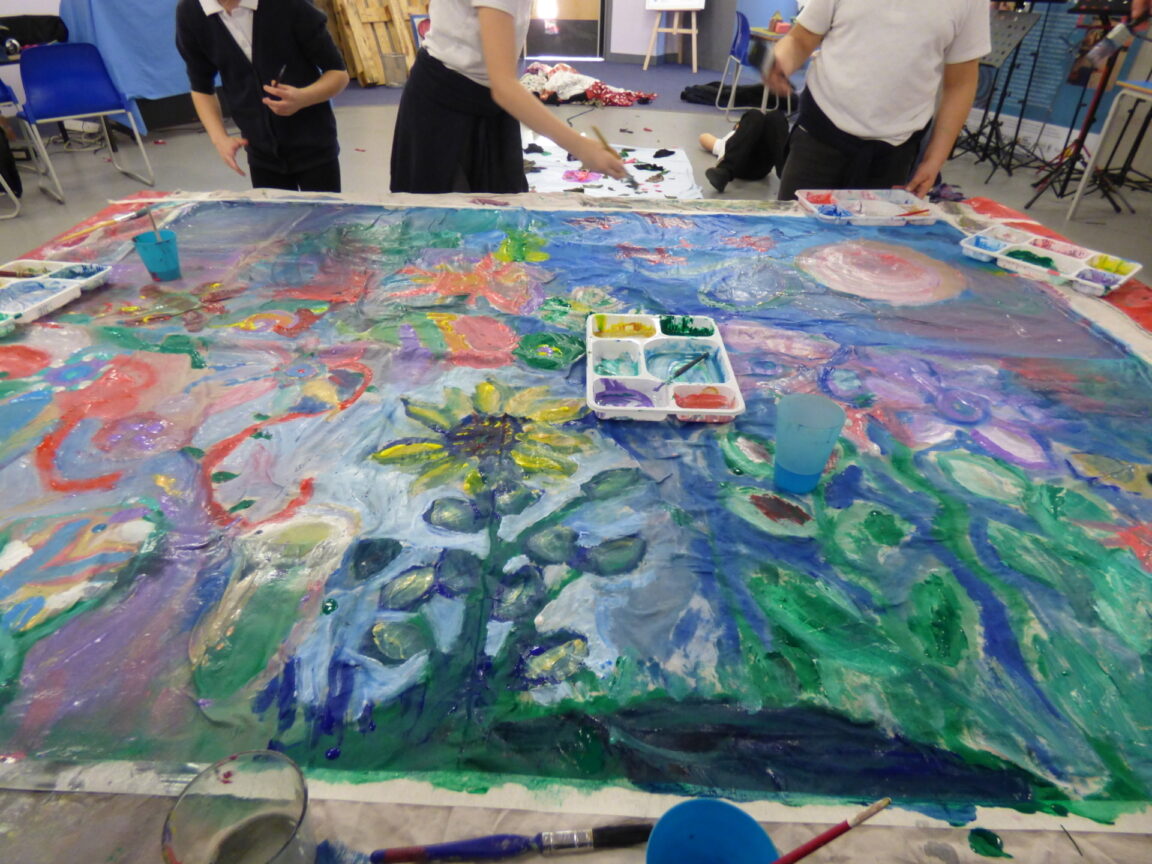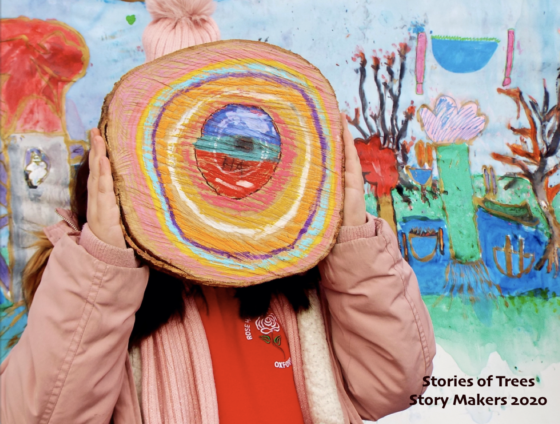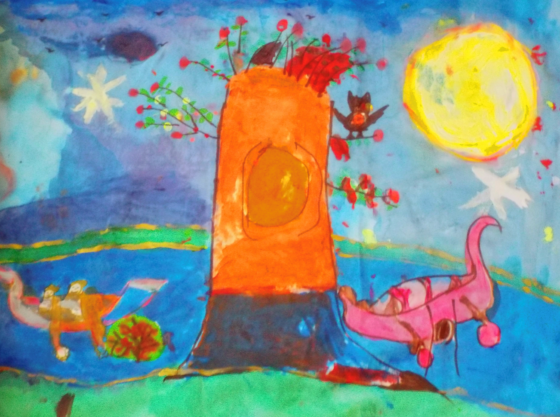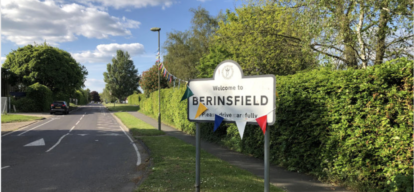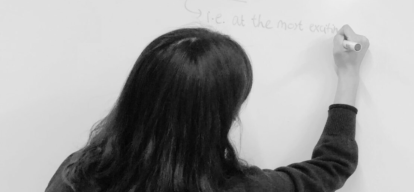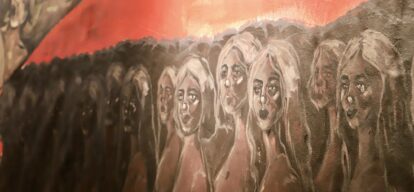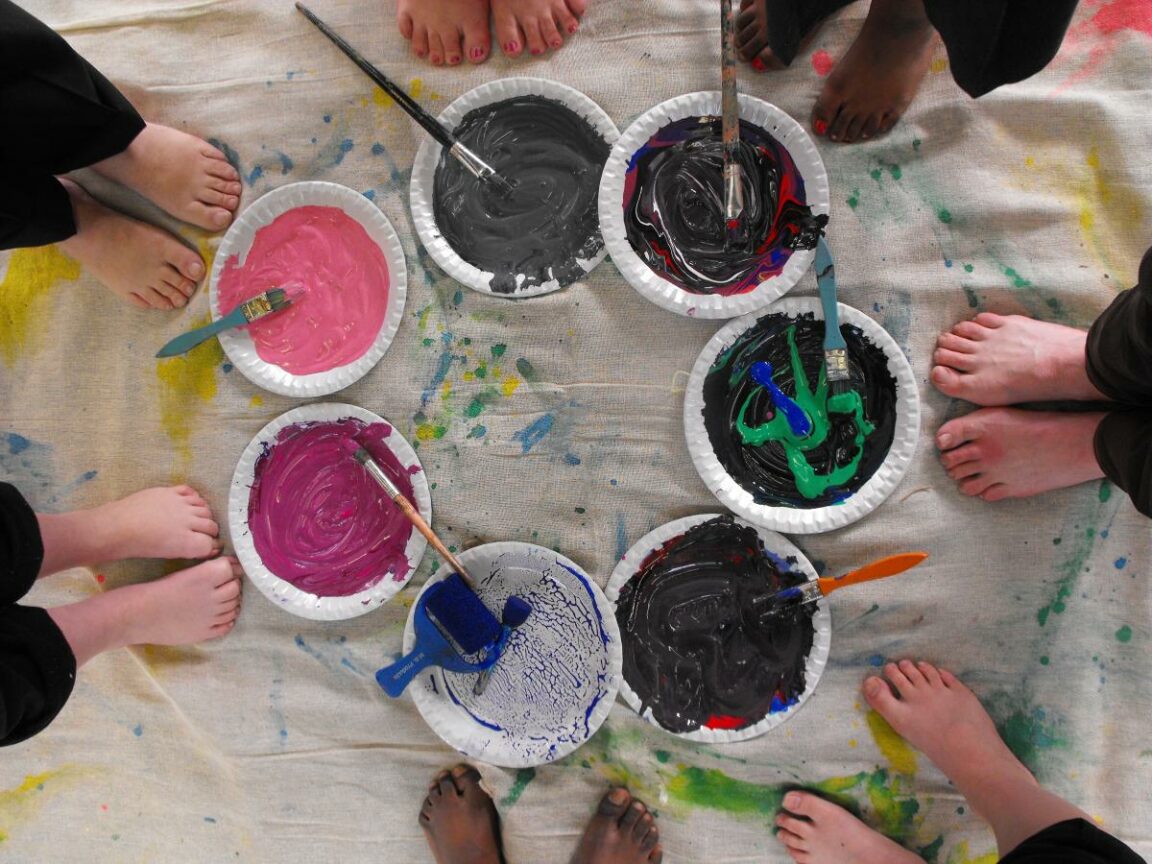
16/08/2023
Story Makers is an annual arts based initiative that has been running since 2011 working with children and staff selected Oxford primary schools to help them explore their creativity & emotional self-expression together and boost their confidence, all whilst supporting their learning, speech & language development and providing tonnes of fun! The programme has been developed by Fusion Arts and Arts Psychotherapist Helen Edwards, with funding from BBC Children in Need. Each year the project partners with and draws inspiration from visits from one of Oxford University's Gardens, Libraries or Museums (GLAM). ⠀
⠀
All participants are thought of as artists and over a 12 week journey they are encouraged to develop new ideas about their identity and relationships. They engage in sensory and artistic activities that are designed to reveal and stimulate experiences of the GLAM's collection. Later during school sessions, they use movement, drama, model making, printing techniques, drawing, painting, sculpting and writing to help them articulate feelings, ideas and stories that have been inspired by the collection, revealing new found confidence, creativity and communication skills.
Importantly, stepping out of traditional educational roles means that children and adults can consider what it can mean to learn in group setting in new ways. Through the years, Story Makers has set up plethora of different workshops to explore these approaches through different art forms and group work, marking a formative experience for so many children and their parents. Particular emphasis is always placed on engaging and being driven by one's senses. Direct sensory contact with inspiring objects and natural materials can build self awareness and confidence. The playful trusting atmospheres built in the groups serves as a potential safe space to share thoughts and feelings not previously articulated, and thus, worked to develop open self-reflection. The safe, creative dialogues that are fostered in the spaces hence lead to the natural enrichment of speech and language.
Story Makers hopes to bridge divides between science and art in education. At a time when art and music are increasingly being withdrawn from curriculums, this work of showing how understanding and observations can be honed and conveyed through these subjects is so important.
“"Participant C grew in confidence and self belief over the course of Story Makers. Initially hiding behind others, she began to try out her own ideas and believe in herself. She found she had so much to share and particularly enjoyed the glass painting. She made new friends and initiated conversations, showing her new felt self confidence and language ability."⠀”
Each time the project runs, the children are taken to a different Oxford museum to discover a new collection and find inspiration in the objects and the people who made them. On this creative journey, the children are accompanied by teaching assistants, a speech and language therapist as well as volunteers.
As "Story Makers" themselves, the participants are exposed to new contexts as well as new modes of artistic thinking, creating and reflecting, which they are encouraged to share with the group. Importantly, these moments provide a space for participants to build their own self-confidence and their capacity for emotional expression.
During the project, the group visits the partnering museum several. From here the children create new stories, exploring narrative strategies and experimenting with model making. Costumes, face painting, shadow play, dialogue and sound are all elements that came together to bring their vision and characters to life. The project generally finishes with an exhibition at the museum of choice and the participants receive a souvenir booklet featuring some of the amazing work and stories they created during the programme.
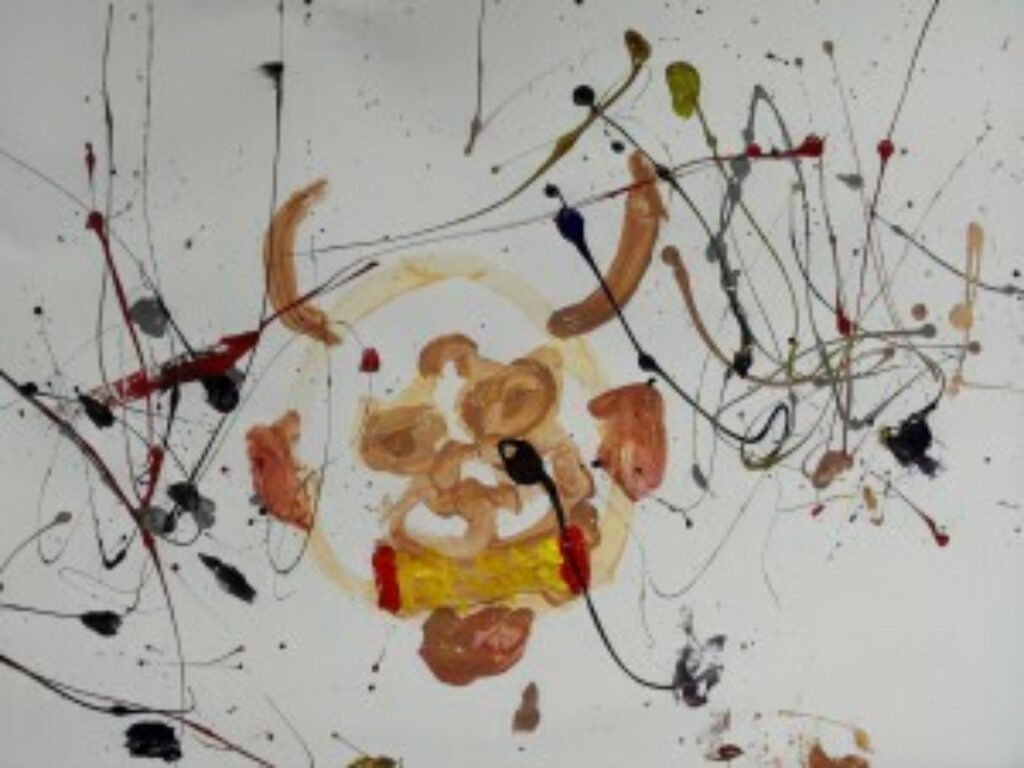
After a successful partnership with Wood Farm, Bayards Hill and Rose Hill and The Ashmolean Museum in 2011 this was the second time the project was able to run. Working with touch, colour, movement and sound, it provided a space in which children could build their ability and confidence with regards to processing, reflecting and understanding information. Building also on their ability to express themselves, the project encouraged children to enrich their vocabulary for communicating.
In 2012 the project worked with the Pitt Rivers Museum and looked at art and the anthropological significance of masks and shadow puppets from all over the world. Children were able to handle masks and Wayang Kulit shadow puppets from the museum's collections.
Fusion Arts also teamed up with Artscape and The Oxfordshire and Buckinghamshire Mental Health Services, which was running classes for adults living with dementia and their carers. Working all together at that point, parallel projects were conducted alongside the children. For instance, inspired by their visits to the Pitt Rivers, a shared session ran at the Fusion centre where all project participants made masks. These were then exhibited upstairs in the Pitt Rivers Museum (18th December 2012 - 14th January 2013).
A Family Day with lots of craft activities also took place at the Pitt Rivers on Saturday 12th January.
To finish off, there was an opportunity to come and see the colourful masks made by the Story Makers participants - a chance to explore new worlds of stories and adventures! Having made miniature friends and bringing them to life, puppet stories and animations were also put on show at the Pitt Rivers Museum.


Story Makers 2013 drew from the Museum of the History of Science’s collection of measuring devices and optical instruments. Participants from the same three primary schools visited the museum and handled and learnt about these objects by taking their own measurements and recording observations. Initially inspired by visits to the museum the young artists began working with touch, colour, movement and sound.
The exhibition, Thinking Space Ways of Measuring and Seeing (10 December 2013 – End of January 2014) presented different responses to this experience, in a variety of media.

This year's project was in partnership with The Oxford University Museum of Natural History. The Story Makers explored the art and ecology of evolution, rock and stone, bone and movement through the museum's collections, engaging with geological collections and a range of the skeletal collections. Following the museum visits the participants created new stories exploring narrative and poetic word, experimenting with mark and model making, enacting characters from their stories using costume, face painting, shadow play, dialogue and sound. Group work this year was centred on creatively representing the art of geology and producing a web of life.
This work was shown in a public exhibition in the Museum of Natural History from 4th March - 30th April 2017. The public was invited to come along and see new imaginative artwork by 7-11 year olds from New Marston, Rose Hill and Wood Farm Primary Schools who had responded to the museum's collections.
On the Family Day, which took place on the launch day of the exhibition, there was an opportunity to meet the artists and teams involved in the project, all while getting involved in some crafts themselves.
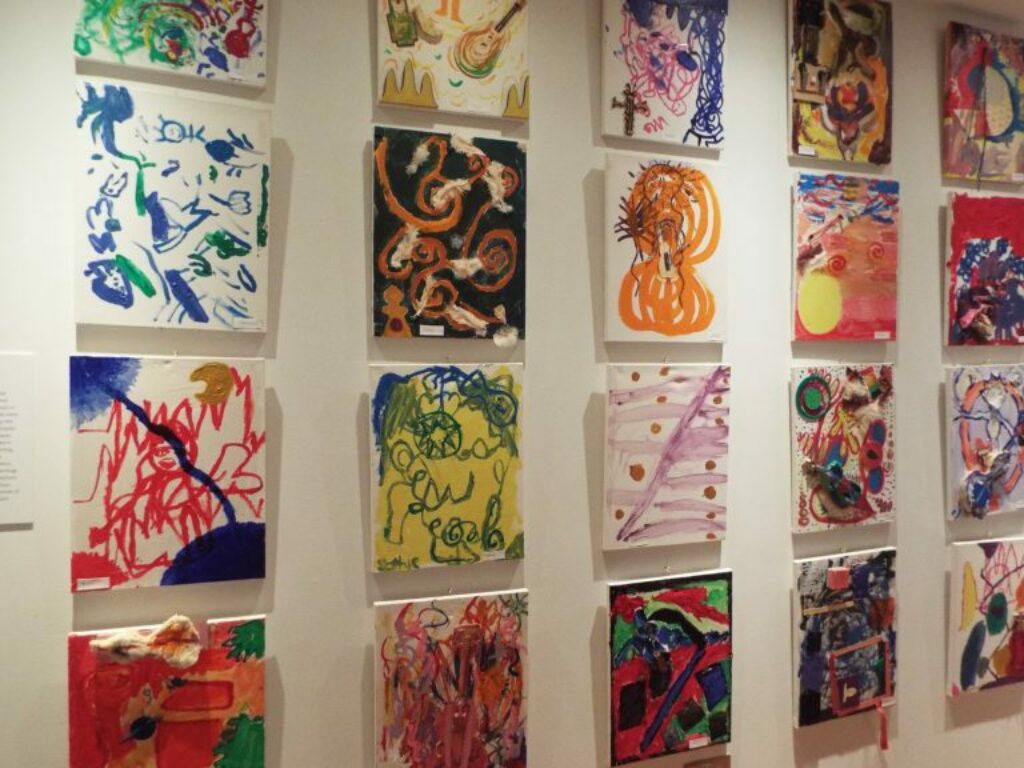
Working with The Ashmolean Museum's musical instrument collection, participants for this project explored music’s capacity to build connections and create shared experiences by engaging in themes of human growth and emotional wellbeing in society. They explored their voices and bodies as ‘soundbodies’ through the use of sculptural materials and paints to create 2D and 3D colourful images that portrayed the qualities of sound in spaces around and within human bodies.
Evidence suggests that long-term musical involvement can lead to improved cognitive language skills, reasoning, creativity, and boosts social adjustment. Music exercises the brain. Playing an instrument involves vision, hearing, touch, motor planning, emotional and symbolic interpretation; all of which activate different brain systems. Music transcends cultural differences, it exists everywhere.
Story Makers’ attention to the senses and to imagination may have served to deepen mind/body awareness. When images appear in different mediums such as clay, drawing, paint or sculpture, they can offer new meanings or interpretations. By embracing the notion of an ‘active imagination’, Story Makers showed how the bodily experience of music can be expressed in interesting ways through other forms of art.
Group and play improvisation
Play can foster relaxation, openness and sharing. Through mark making, movement and breathing, simple games, sounds and gestures can encourage a special awareness of one's body and breathing, providing a stable ground for emotional and psychological learning.
Why The Ashmolean Museum musical instrument collection?
The Baroque and Renaissance musical instrument collection in the Ashmolean Museum served to illustrate human curiosity into sounds and technology. Story Makers engaged with the collections to explore materiality, shape, form, construction, to explore the feeling that these musical objects convey. The instruments are incredibly anthropomorphic, where the neck, ribs and back of the instrument are so important in the creation of its voice.
Hearing is the first sense to develop in the womb, developing at four months. From birth, the early sound exchanges between mother and baby are the first forms of emotional expressiveness. Anthony Storr (1992) addressed the mystery between music and the developing mind and argued that music originates in the human brain rather than the natural world.
The idea that music is ‘species-specific’ would imply that it is unrelated to, for instance, bird-songs, or that the acquisition of words by birds is not connected to human speech. Music is a unique language being both unintelligible and untranslatable. A singing voice carries further than a speaking voice and seems to operate within a language of its own.
The relationship between music and the brain, and its bearing on the human relationship to the physical universe seems significant, especially since it has been shown that certain cells in the right hemisphere of the brain respond more to melody than to language. Neurons also learn to prioritise certain sounds which shows that learning is not a ‘higher’ brain function, but rather, is one that occurs in the sensory system itself. Moreover, musical experience seems to shape the human brain in ways that can also appear to be culturally specific at times too.
Like all art forms, music powerfully makes contact with certain universal principles such as love or passion, even if made specific in the mind of the creator or the listener. We might think of how the ‘universal’ aspect of music aligns it with mathematics - both distinguished by inevitability, scale and harmonies.
Exhibition
The project culminated with an exhibition showcasing participants' work at the Ashmolean Museum. See examples of the beautiful and innovative work that was on display below.
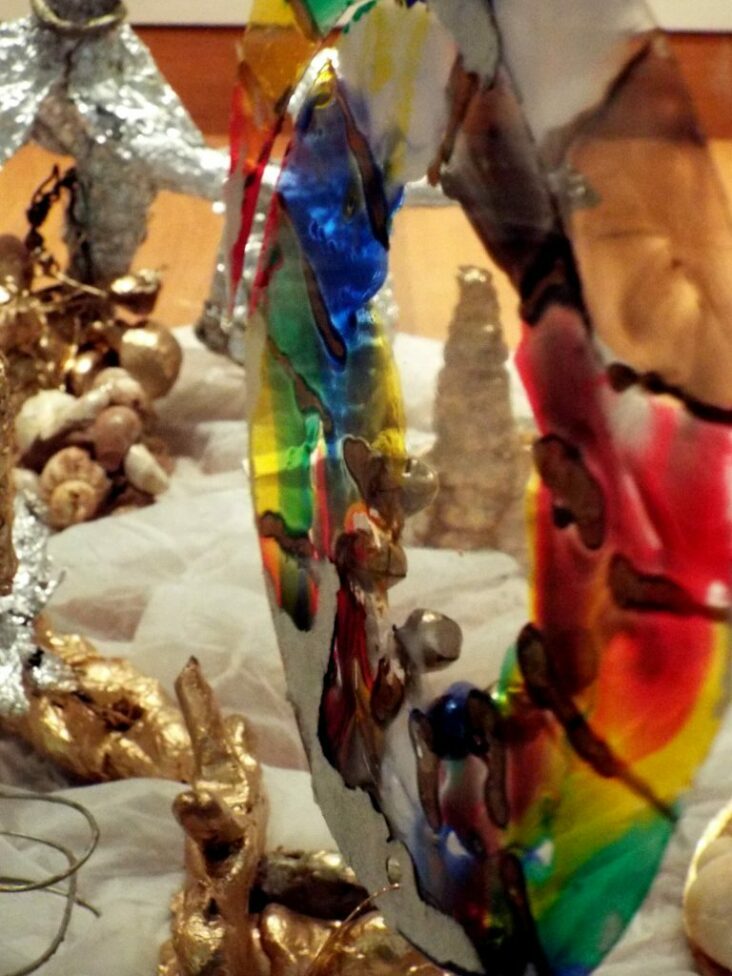
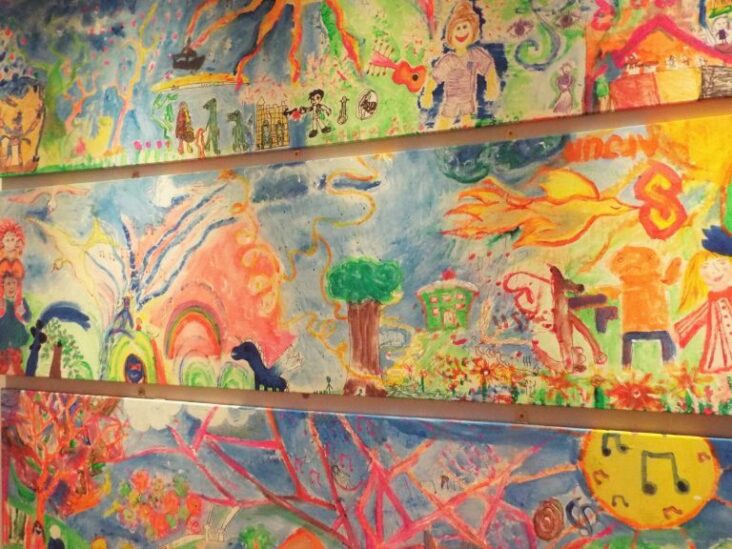
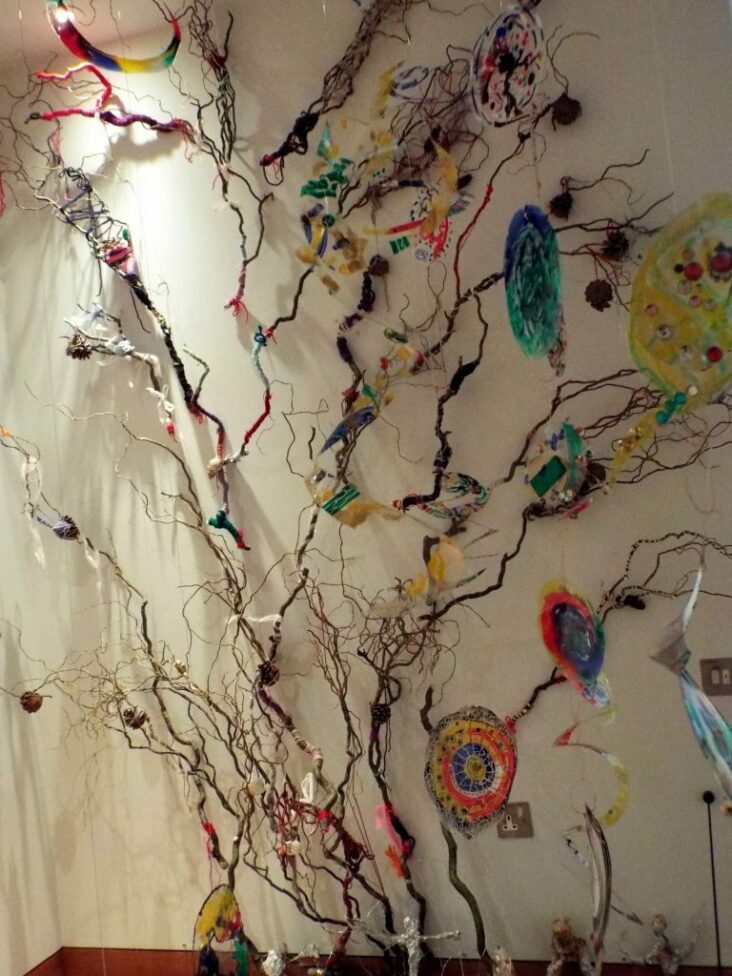
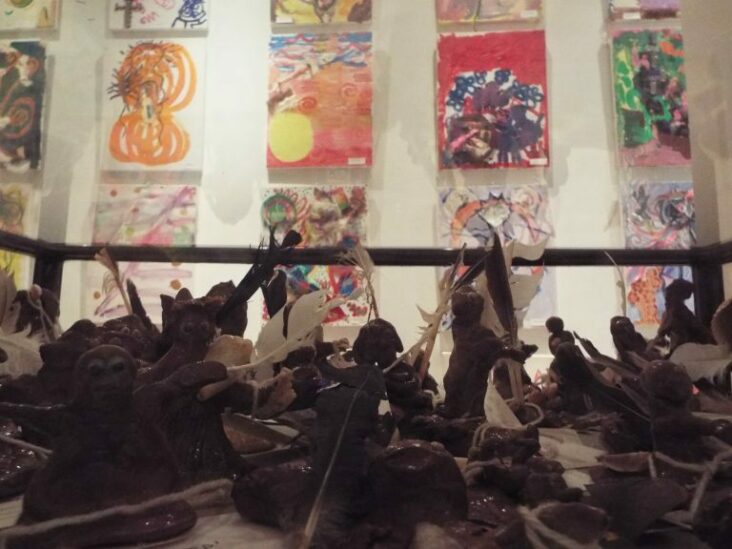
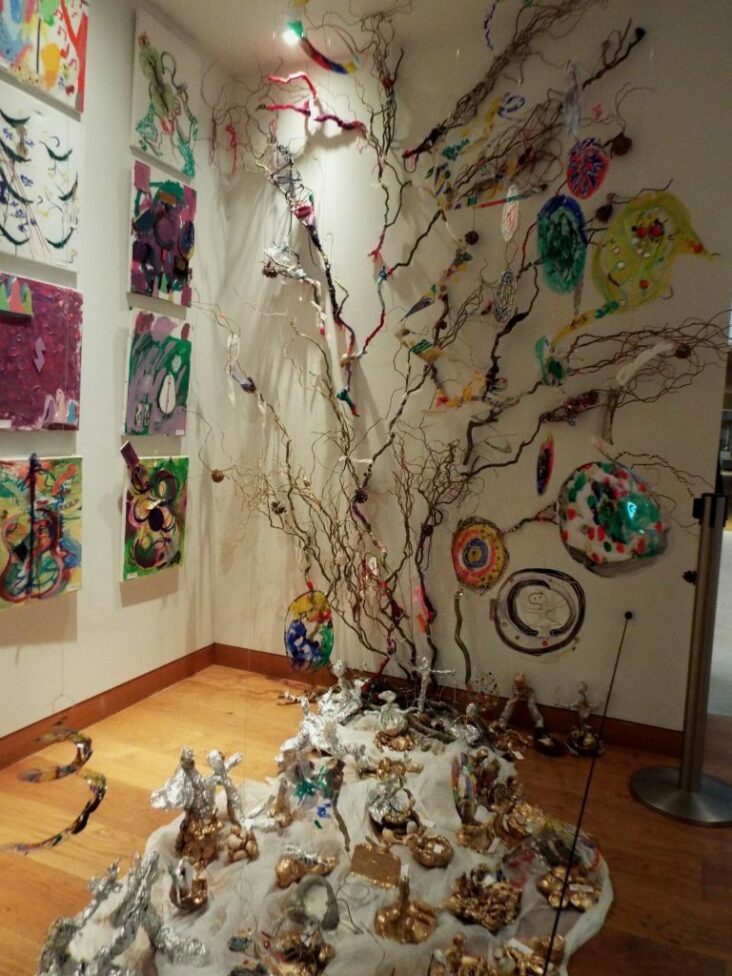
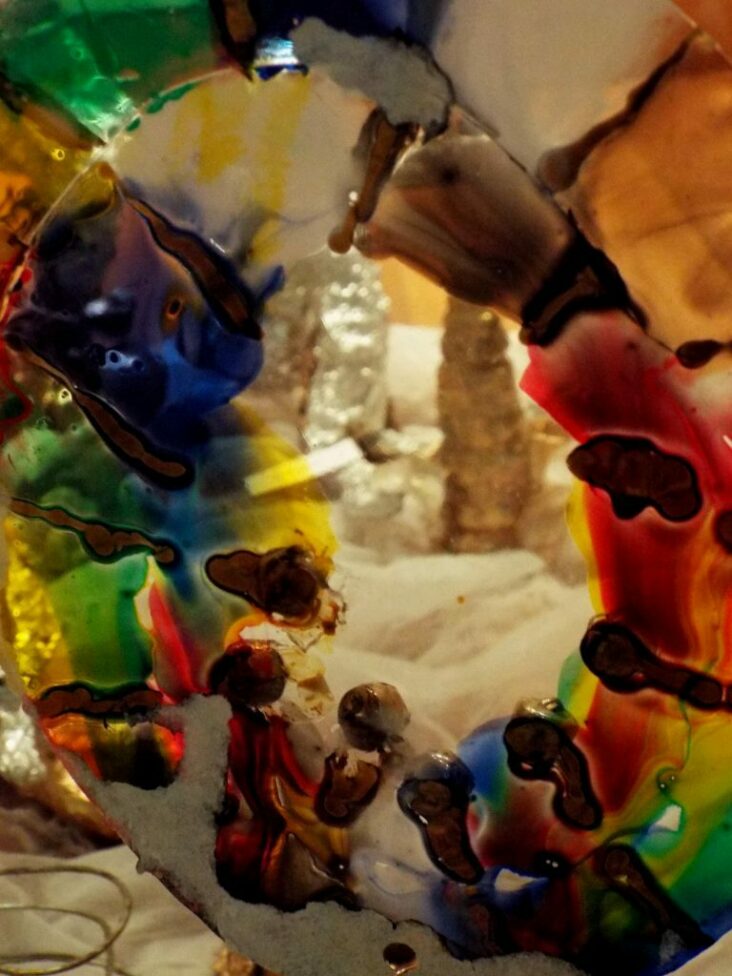

In 2019, the Story Makers headed to the University of Oxford Botanic Garden to explore the diversity of plants, their adaptations to different environments and their relationship to us. Participants were encouraged to think about why the plants were being cultivated in the Botanic Gardens and what could be learnt from studying them. Spending time in the gardens acted as a vital time to stimulate and activate different sensory experiences. Participants embraced movement, imagination and sensory engagement to bring alive the living science in the gardens. Through drawing, clay modelling, printing and expressive colourful materials these experiences were further explored.
Emphasis was placed on sensory experiences in the gardens: sight, focal and peripheral; sound, birds and insects; smell, air, plants and ground; taste; touch, temperature; movement and growth in the gardens. The project allowed for all of these to be explored through art to raise self awareness and bring alive ideas of growth and blossoming and create new imaginative stories.
"Let nature be your teacher." - William Wordsworth
Why the Botanic Gardens?
The cultivation of plants has been around for thousands of years, the first examples dating to around 3000 years ago in ancient Egypt and Mesopotamia. The Romans were keen gardeners and were also aware of the medicinal properties of plants. Monks followed on from the Romans in identifying the medicinal properties of plants and also used the beauty of plants and flowers as a way of celebrating god. The first monastic gardens were cultivated in the 8th century were precursors to the physic gardens that began to appear in the 16th century.
However, none of these gardens could be regarded as “botanic gardens”. A botanic garden is not an easy thing to classify, although an underlying scientific purpose tends to characterise them. Some have considered that the world’s first botanic gardens were the gardens of 16th and 17th century Italy because they were purely for the academic study of medicinal plants. By the 16th century, these medicinal gardens had spread to universities and apothecaries throughout central Europe. In 1621, The University of Oxford Botanic Garden was the first garden of this type to be established in the United Kingdom, with a mission to promote the learning and the glory of god.
Story Makers’ engagement with the living museum that is the Oxford Botanic Garden, brought the ordinary into the realm of the extraordinary, placing the work of its participants within the context of human endeavour. The garden brings the human body together with the natural environment, and in so doing, awakens the senses. The ground is rich with life and diversity, and the adaptations made by plants offer a window into learning about evolution and creativity.
With nearly 6,000 different types of plants the garden is a year-round oasis of biodiversity in the heart of Oxford. Visiting the garden was an ideal opportunity for Story Makers to engage with the natural environment.
At Oxford Botanic Garden, the school groups visited inspiring herbaceous borders and glasshouses and handled specimens whilst learning about relationships between plants, and humans and plants. ⠀
⠀
The programme culminated with a family open day and exhibition of the imaginative, inspiring artwork made by the participants at the Gardens for family, friends and visitors to come and enjoy. See examples of the lovely work below.
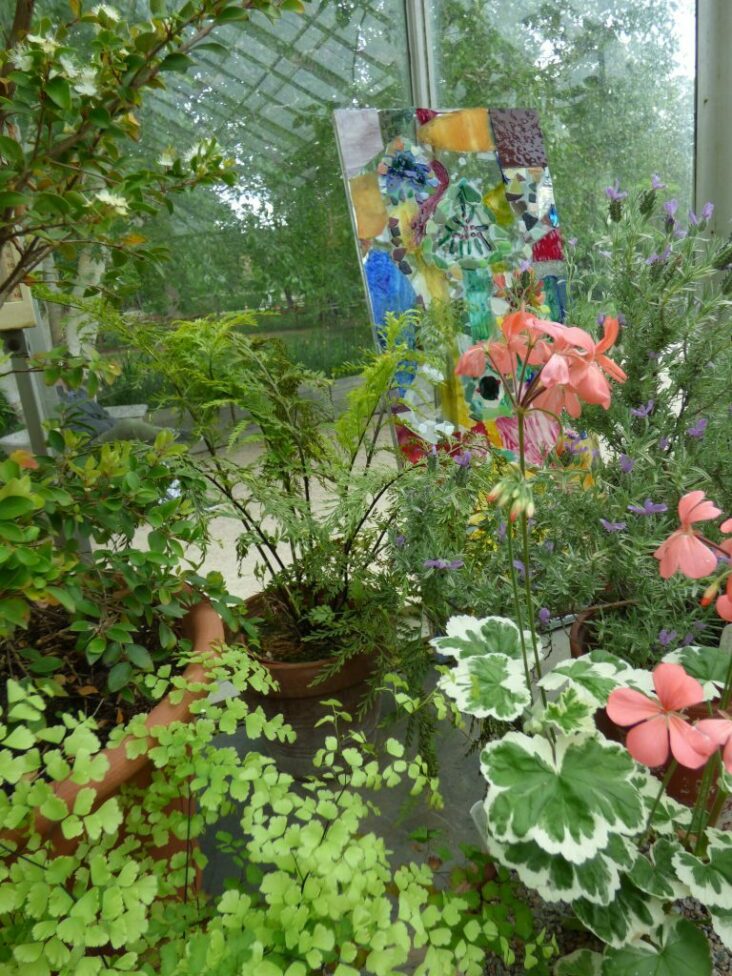

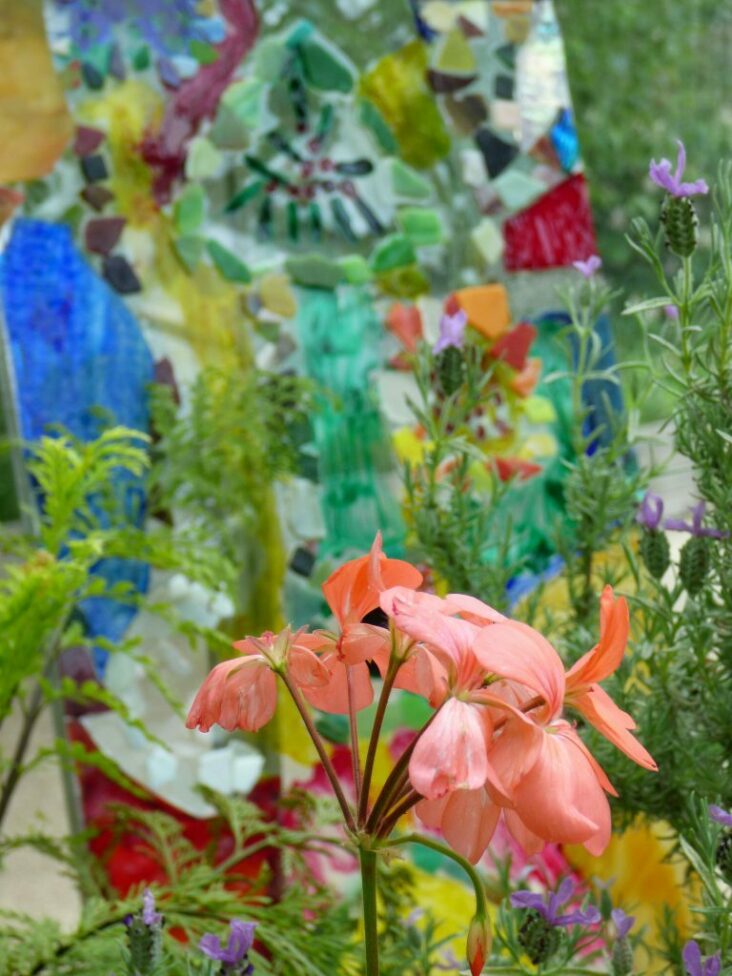
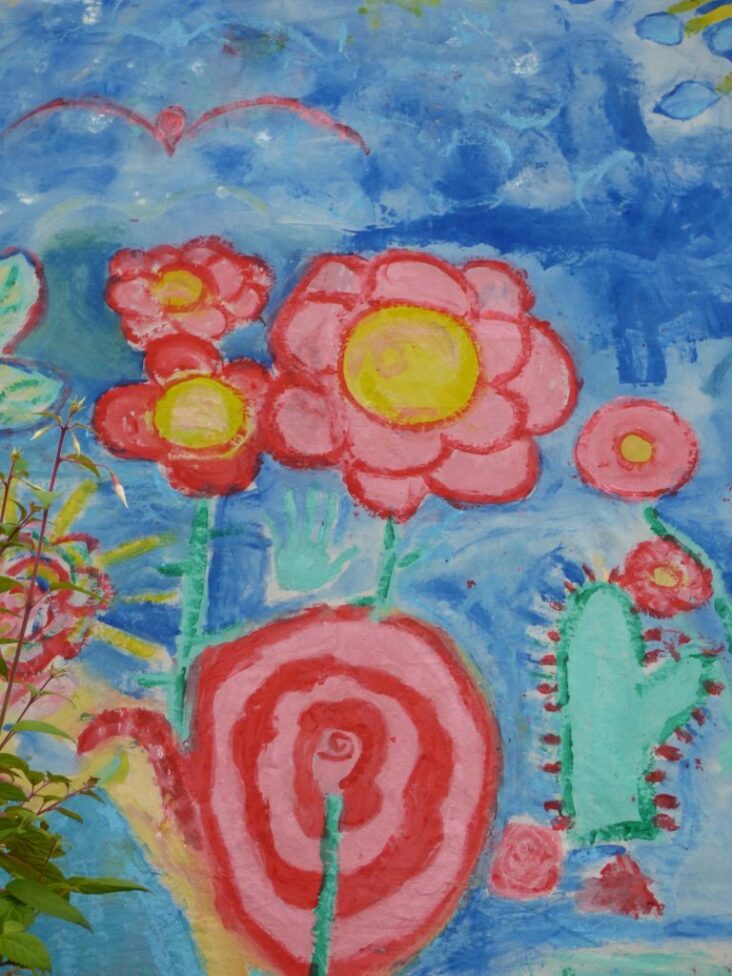
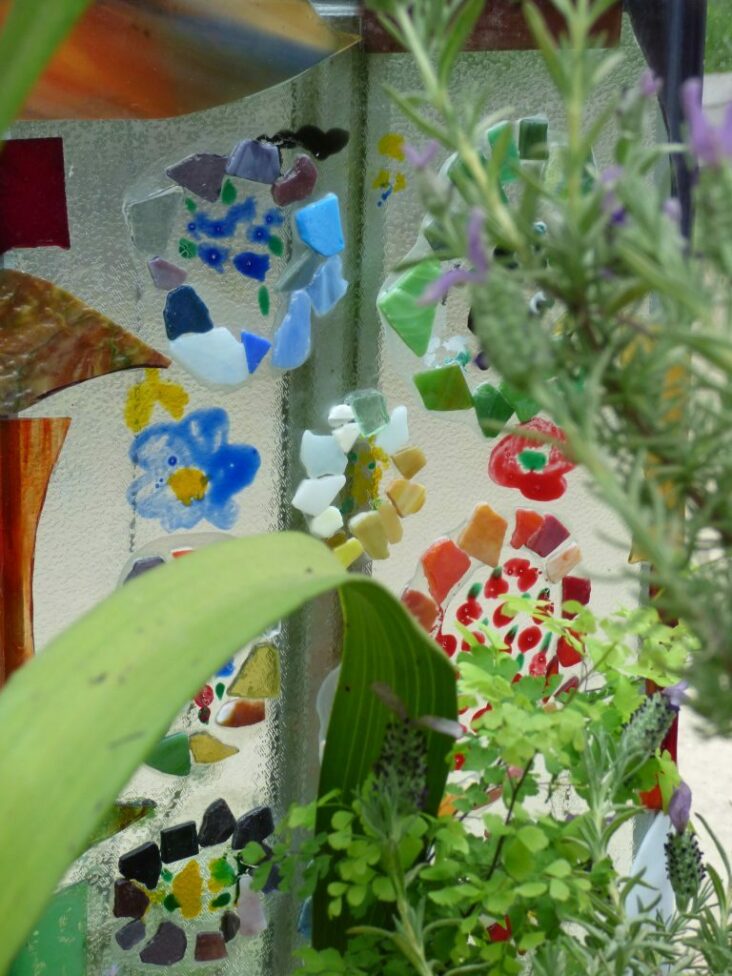
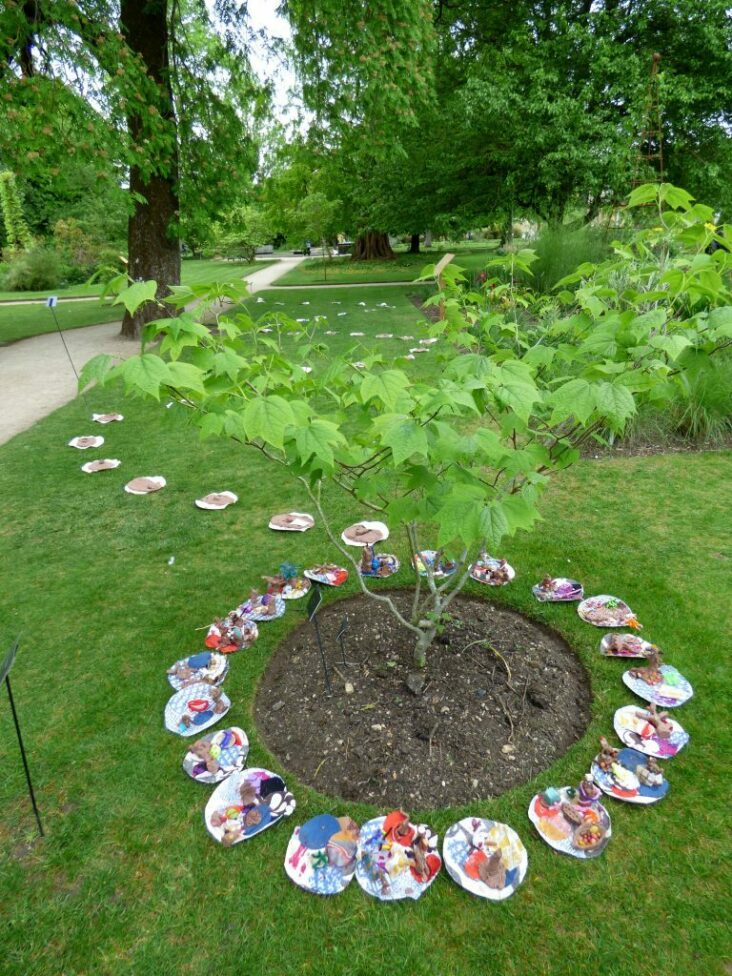

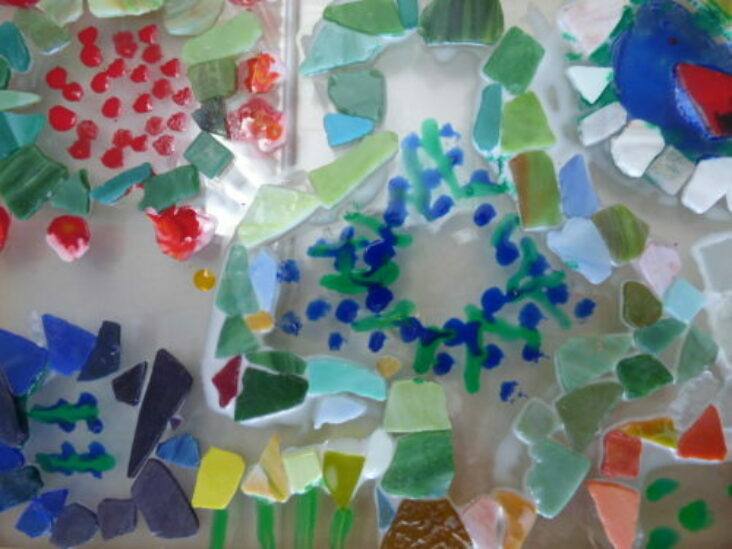
New artwork created by children and staff at Rose Hill, Bayards Hill and Wood Farm Primary Schools was exhibited on 18th-19th May in 2019 at the University of Oxford Botanic Garden.
The event included refreshments and art activities all to celebrate the launch of the 'Stories in the Garden' exhibition which then moved to the Fusion Arts centre for the rest of May to the 18th of June.
Oxford Botanic Garden's plant collection as the 2019 Story Maker theme
2019 marked the sixth year of the Story Maker project and for this year the theme revolved around the University of Oxford Botanic Garden's plant collection. It encouraged the exploration of different species as well as the relationship between plants and humans.
The artwork in the exhibition and open day was the culmination of a twelve-week Story Makers programme that had worked with children and staff in three primary schools across Oxford who were engaging throughout with the theme through art practises.
In addition to the exhibition, the vibrant and highly imaginative artwork and accompanying stories were bound as a series into a book for the schools and children to treasure and share with others.
"They [the participants] relax their bodies and minds and start having fun. Story Makers is such a successful project because the project encourages everyone, children and adults, to be themselves, learn new ways of communicating their own unique ideas and feelings and realise their own intelligence." - Integrative arts psychotherapist, Helen Edwards
Learning week by week
Some weeks focussed on sensory learning, exploring the plants through movement, touch, smell and sight. For example, thinking about the evolution of smell and how plants use scents as a means of self-protection or as a means of attracting animals to their advantage. While during other weeks, children produced large scale group paintings together, carefully negotiating space for their beautiful images on the canvas.
Art techniques used include clay modelling, painting, drawing, glass, crafting and sculpture. The children also made beautiful clay imprints of seeds and leaves from the Oxford Botanic Garden and produced cyanotype prints (blueprints) of unusual designs.

How was Story Makers different in 2020?
Normally, Story Makers run sessions with groups of 10 pupils in three Oxford-based primary schools (Wood Farm, Bayards Hill and Rose Hill). However this year, in light of COVID-19 government guidance, Story Makers worked with the 30 children who make up the Year 4 class at Rose Hill Primary School. The Story Makers sessions ran for 10 weeks during the Autumn 2020 term and were led by Helen Edwards with support from the class teacher, three teaching assistants, sessional art worker Clare Davis and Rebecca McVean from the Pitt Rivers Museum. Each session offered the young artists and their teachers the opportunity to explore being creative together and to study the ecology of trees, using a range of different art materials and their imagination to bring their experiences and discoveries to life! The Story Makers team felt that trees and the environment were an ideal focus for this year’s sessions, given that the lockdown had caused many of the children to be out of school and less able to interact with nature.
What did the Story Makers get up to?
During those 10 weeks, the artists participating in Story Makers were very engaged and focused! Over the course of the sessions, the Story Makers learned and created across many different mediums, including verbal sharing, storytelling and making, movement and imagination, drawing, sound exercises, film, painting, clay, paper folding, mosaic, pastels and fabric painting.
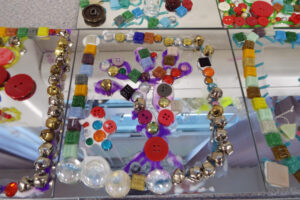
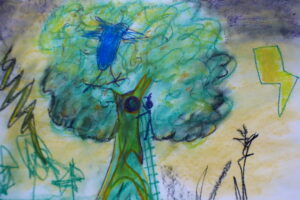
Sessions were based in the classroom and in the school’s outdoor learning spaces amongst the trees. In the outdoor areas, the children and teachers explored what it might be like to be a tree by imagining themselves growing from a tiny seed to being inside of a big tree trunk, open to the sky. They investigated the shape of tree branches and the sensation of leaves on their fingertips as they listened to the sounds outside, taking in the atmosphere of the trees. Together, the Story Makers learnt about the needs that a seed has to grow and how a tree might respond to changes in light, water, temperature, rainfall, ground qualities, weather, climate, oxygen and carbon dioxide.
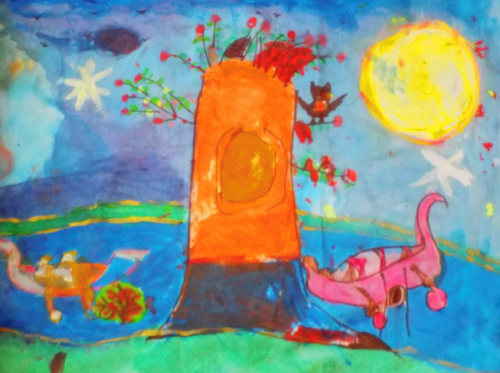
Inspired by this experience, the young creatives produced a range of artwork. They started out by creating bold, colourful and unique pictures of trees and animals. These pictures were then used as the design for cloth bags which the participants were delighted with! The artists used the bags to collect autumn leaves which provided colour and shape inspiration for their subsequent artwork. The participants’ artistic practice then evolved into the creation of beautiful glass mosaics inspired by what they had learnt about seeds; multicoloured designs marked onto cross sections of an ash tree to represent the passing of time; a large scale group fabric painting of a forest and movement and dance improvisation activities in which participants embodied the trees that they had experienced outdoors.
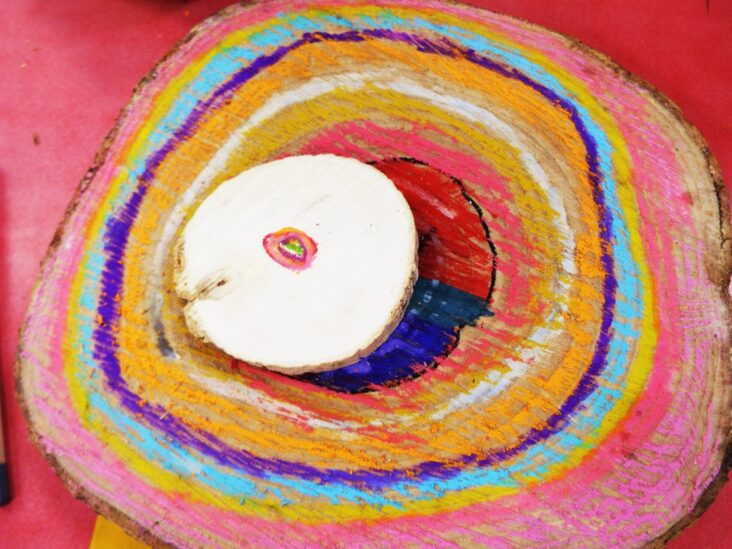
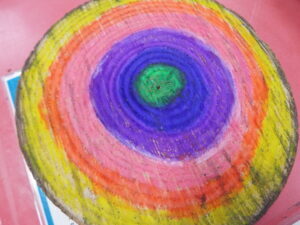
These creative activities were interwoven with two sessions with the Pitt Rivers Museum. For the first session, museum education workers came to visit the Story Makers at school and for the second, the Story Makers linked up live with education workers at the Pitt Rivers. During these sessions, the artists found out all about cultural uses of wood in boat making and its connection to the ecology of trees, as well as the human activities undertaken in the different types of boats that were presented to the participants during the Pitt Rivers live link. Alongside this, the Story Makers handled a range of wooden objects from different cultures, researched wooden objects from their own homes, learnt origami techniques for creating hooded fishing boats and had great fun enacting different animals in their playground during the Pitt Rivers school visit.
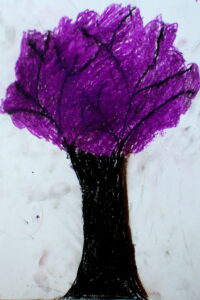
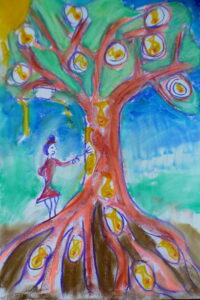
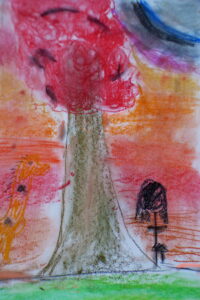
On top of all this amazing creativity, the Story Makers even found time to write inspiring stories about themselves from the perspective of a tree, informed by what they had learnt and experienced over the course of their project. This was a great opportunity as it allowed each of the participating children and adults’ imaginations to shine! The stories are all unique and include descriptions of the tree characters’ origins and their relationship to landscapes, boats, people and ecology. The Story Makers team have used the stories and artwork generated during the sessions to produce books for all the participants and their families as a memento of this joyful project!
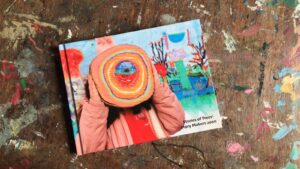
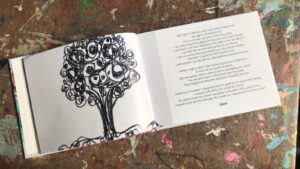
This project has been such a rewarding and enjoyable experience for all involved, with each participant bringing their own unique qualities to the diversity of the group. They have learnt so much about cooperation and sharing, listening skills and speaking, asking questions and trying out new ideas, and about there being no judgement and to keep going!
"Over the course of Story Makers, participant E gained in confidence to try out new ideas and to engage with others. His spoken word and writing skills grew and he gathered more self belief. As the programme progressed, his intelligence became more integrated with his imagination and he learnt new and varied vocabulary. The art processes helped his fine motor skills and helped him find more balance and self belief."
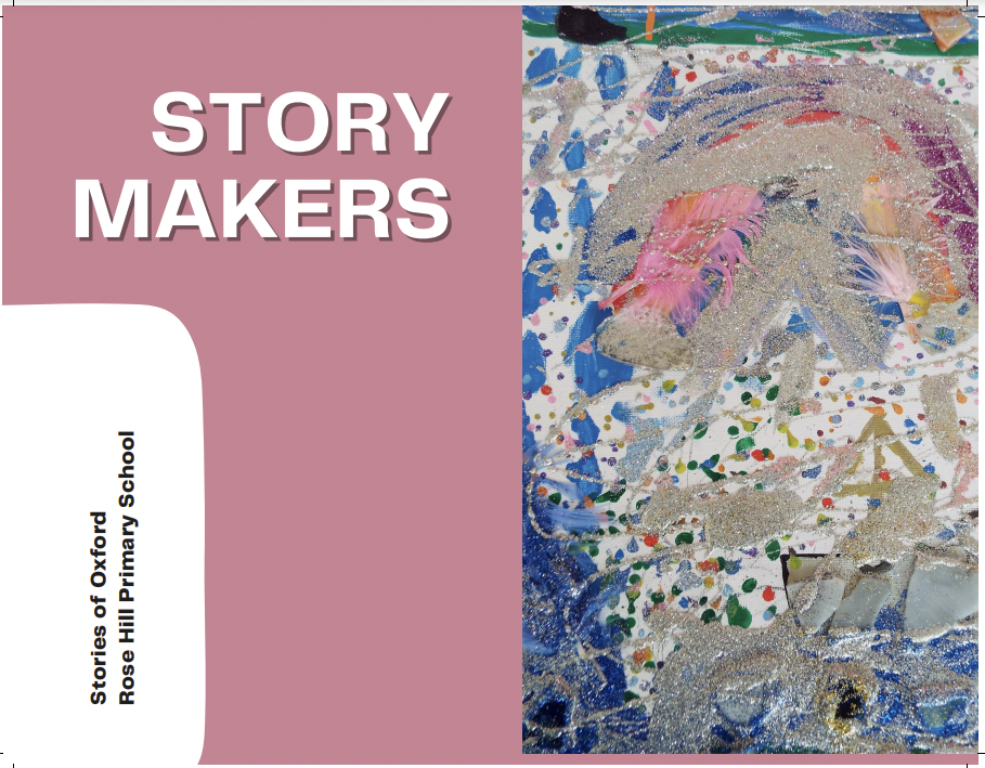
This year in Story Makers, groups of children and staff at Wood Farm and Rose Hill Primary Schools met weekly as artists. They explored Oxford’s history, its landscape, ecology and waterways through art and movement. The sessions, with artist Helen Edwards, engaged the senses and imagination.
This year in Story Makers, groups of children and staff at Wood Farm and Rose Hill Primary Schools met weekly as artists. They explored Oxford’s history, its landscape, ecology and waterways through art and movement. The sessions, with artist Helen Edwards, engaged the senses and imagination.
The stories, alongside some created artworks, are presented in the Story Makers book "Stories of Oxford". The book showcases the richness and beauty of the experience of the project.
The sessions, with artist Helen Edwards, engaged the senses and imagination. We worked with textures of natural woodland materials as well as coloured fabrics. Everybody loved building layers of feeling and expression through music, movement and dance. We created mosaics, sculptures and multimedia artworks and wrote stories.
At the Museum of Oxford we looked at the history of the Rivers Thames and Cherwell. We learned about the rivers' landscapes and their relationship with the growing settlement of Oxford. We thought about Oxford's history and its relationship with the waterways it is so connected with.
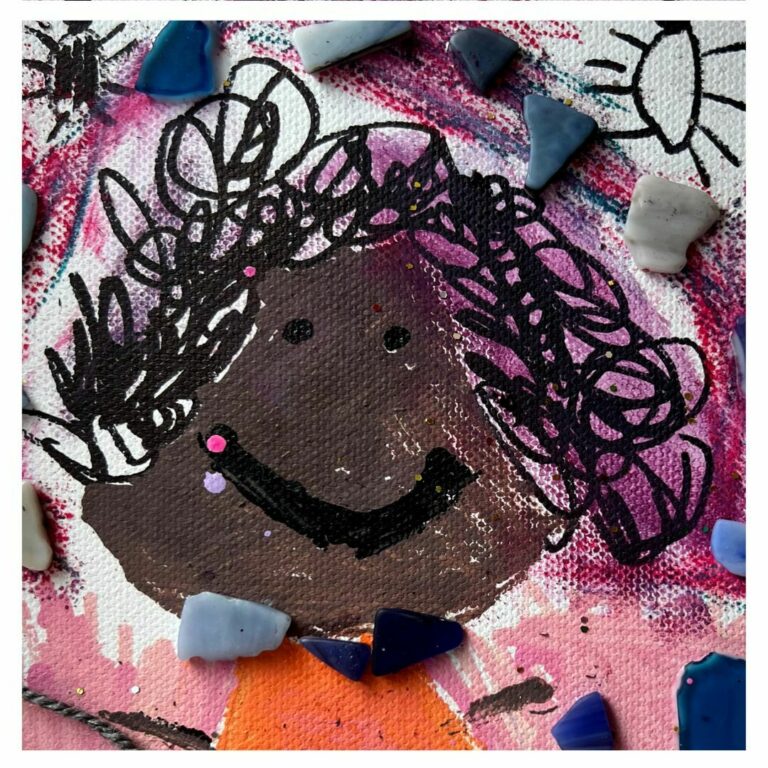
In this year’s Story Makers project, children and staff from Wood Farm, Rose Hill, and Larkrise Primary Schools came together weekly after school, exploring the fascinating world of insects through art. Inspired by the Hope Collection at the Oxford University Museum of Natural History, participants delved into the life cycles, survival strategies, communication, camouflage, habitats, and ecological roles of insects over time.
Led by Story Makers’ Helen Edwards, the sessions sparked sensory and imaginative engagement, offering children the chance to experiment with a diverse range of textures, colors, and materials. Through individual and collaborative art-making, participants expressed their ideas through layered creations—painting on canvas, model-making, multimedia collages, and even storytelling. Movement, sound, smell, and dance added further depth, bringing their creative visions to life.
Two visits to the Museum of Natural History enriched the experience, where children observed insect collections, their camouflage, life cycles, and unique adaptations. They embodied these ideas by “becoming” insects, using their bodies to embed a sense of place, and were captivated by amber-preserved specimens, imagining the evolutionary stories they held.
Through this unique project, participants discovered new language and ideas, channeling their creativity into imaginative stories and artworks around the theme of Stories of Hope. The multimedia canvases created during the project beautifully reflect the richness, wonder, and expression of their journey.
“I love watching them come alive, I love their ability to experience life in a different way through art and you really get to see their true personalities when they’re being creative.”
Story Makers is rooted in ideas drawn from theories of child development, art psychotherapy and artistic practises. Working artistically from body movement and acts of gesture, breathing and image could raise awareness of thought patterns. Past experiences that were perhaps previously felt to be traumatic, unacceptable, and buried for whatever reason, could come to light through a safe immersion in art making practises. Conscious expression and communication deepened an engagement in the present moment, whether that be in regards to relationships, verbal articulation and language or ideas of physical presence.
The capacity for calm reflection, the ability to think about ones own sensation, thoughts and bodily presence, without a doubt informs our interaction with inner and outer worlds. The practise of entering mindful and conscious states of mind are known to calm the autonomic nervous system and produce a state of neurological coherence that is stable, adaptive, flexible and energized. Self conscious awareness empowers through choice and agency, which seem to stimulate areas in the brain associated with happiness (Siegel 2007).
The psychoanalyst, Christopher Bollas, coined the phrase the “unthought known”, by which he referred to as the variety of reasons we may not be able to think about or have an intuitive sense for these ideas that we struggle to put into words (Bollas 1987). In psychoanalytic terms, this refers more specifically to the boundary between the unconscious and conscious mind - the “preconscious mind”. Through an active participatory approach among groups, human imagination can be engaged in such ways to reveal hidden potential that is stored within these grey areas between the conscious and unconscious spaces. A collaborative group process can allow a child the possibility to develop new ways of thinking about their experiences. The creation of art and the reflection on it, can provide a bridge between imaginative and abstract thinking, and conscious awareness.
Story Makers embraces the sensory experiences and perceptions of colour, form and texture as new modes of learning. Drawing is used as a tool to deepen understanding and open up new languages to access the uncovered.
Resourcing education that focuses on care is not essential in the modern world of consumerism. Inside every person lies something unique and Story Makers’ intention is to help every individual realise this.
Story Makers has received funding from BBC Children in Need for 2022-2023 and we are working with Wood Farm Primary School in partnership with the Museum of Oxford. We are hoping to start the programme in 2024.
Fusion Arts work with artists, groups and communities from across Oxfordshire and beyond to support a variety of imaginative and socially engaged projects.
Working with communities in Berinsfield and Didcot
Creative writing workshops for young people in Oxfordshire and beyond.
Exploring Climate Change Through the Eyes of Indigenous Farmers in Indonesia. A collaborative project with Soboman Artspace 219 in Yogyakarta.
